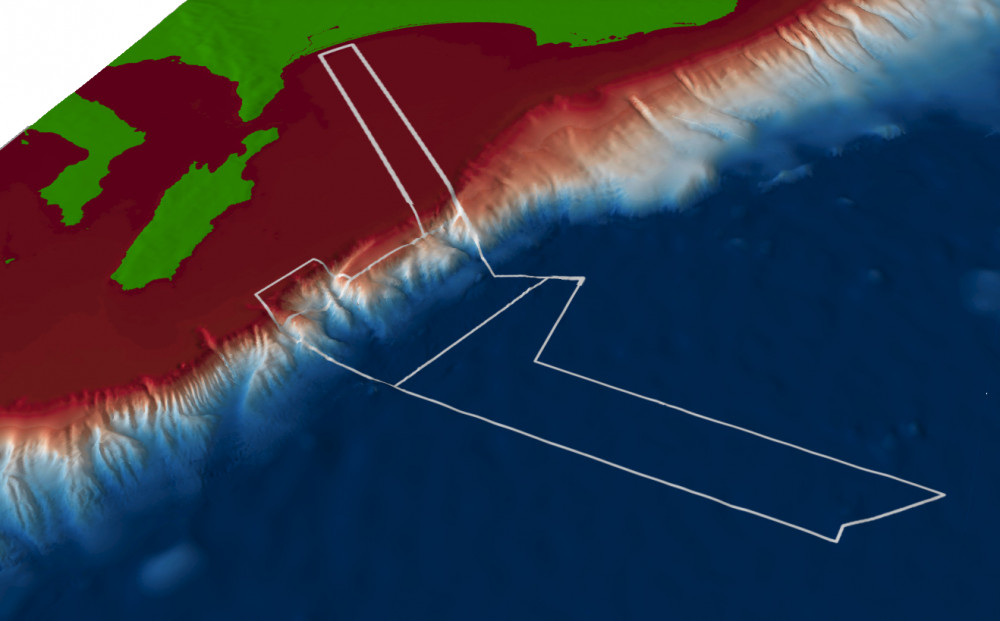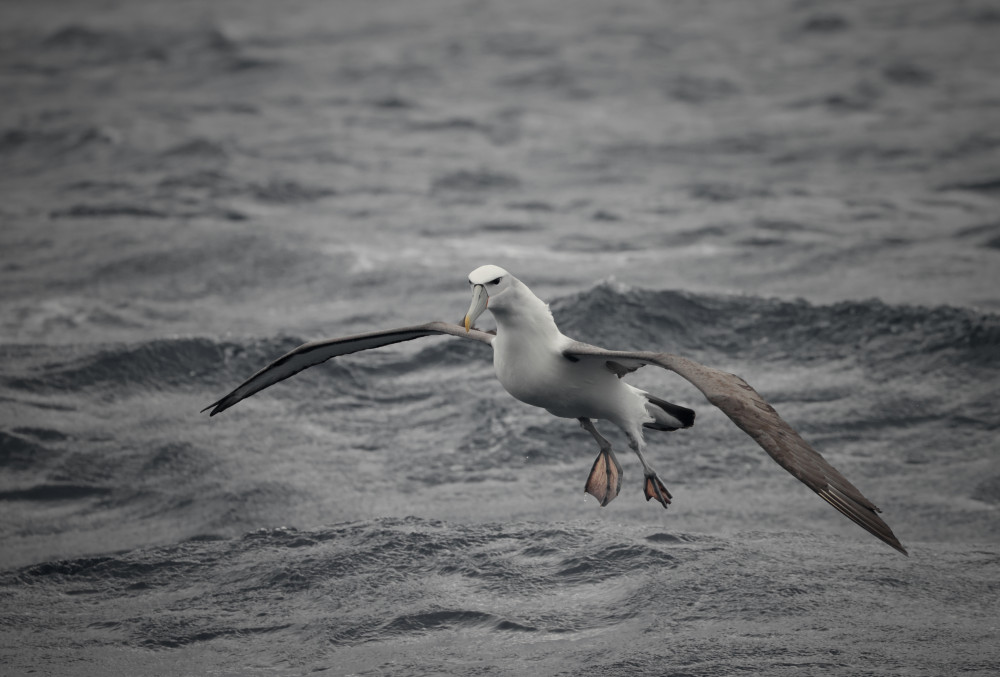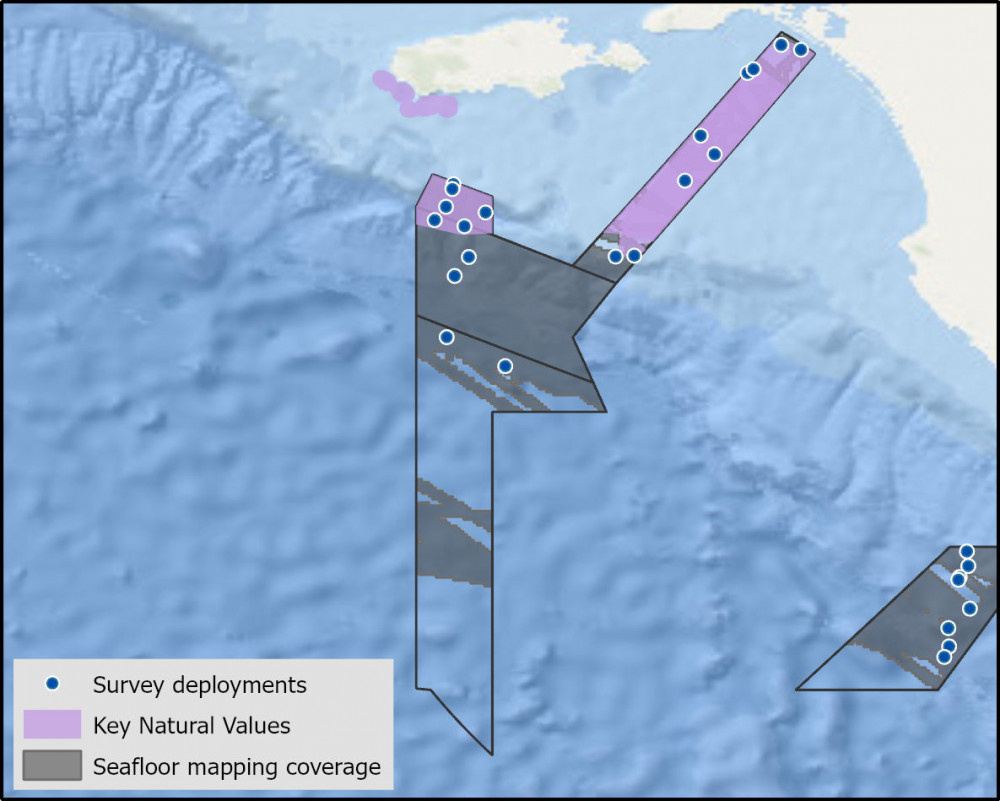Murray Marine Park contains highly varied geomorphology throughout the park, potentially encompassing many shelf reef habitats. The northern edge consists predominately of Lacepede shelf, a large shelf area intersected by ancient channels of the Murray River that converge at the head of Sprigg canyon on the continental shelf2. It covers representative areas of four bioregions.

Knowledge status
Murray Marine Park has a low level of knowledge.
- Limited fine-scale mapping and no known biological surveys have occurred.
- There have been 55 sediment samples collected from 5 surveys.
- Publications, reports and data sets include 15 South east network that relate to Murray Marine Park and 2 Murray Marine Park specific publications.
- Depth: 24m – 5729m
- 49.9% of seafloor mapped, most at medium resolution to support biodiversity surveys.
Key values, habitats and communities
Murray Marine Park incorporates core foraging areas and home range for the endangered Shy Albatross (Thalassarche cauta).

Key activities
- Recreational fishing
- Shipping
Key Pressures
- Resource extraction
- Climate change
Seafloor mapping and survey deployments

Other information
State of Knowledge published Mar 2023 | References:
- Mason, C., Alderman, R., McGowan, J., Possingham, H.P., Hobday, A.J., Sumner, M., Shaw, J. (2018) Telemetry reveals existing marine protected areas are worse than random for protecting the foraging habitat of threatened shy albatross (Thalassarche cauta). Diversity and Distributions 24: 1744-1755. https://onlinelibrary.wiley.com/doi/epdf/10.1111/ddi.12830
- Hill, P.J., De Deckker, P., Von Der Boch, C., and Murray-Wallace, C.V. (2009). Ancestral Murray River on the Lacepede Shelf, southern Australia: Late Quaternary migrations of a major river outlet and strandline development. Australian Journal of Earth Sciences. 56, 135-157. https://www.tandfonline.com/doi/abs/10.1080/08120090802546993
- Schmidt, S., De Deckker, P., Etcheber, H., and Caradec, S. (2010). Are the Murray Canyons offshore southern Australia still active for sediment transport. Geological Society, London, Special Publications. 346, 43-55. https://www.researchgate.net/publication/258391530_Are_the_Murray_Canyons_offshore_southern_Australia_still_active_for_sediment_transport
Key Natural Values (KNV) = Habitat or species that are particularly important to management.
Printable version: AMP - SE SOK Placemat templates (parksaustralia.gov.au)

